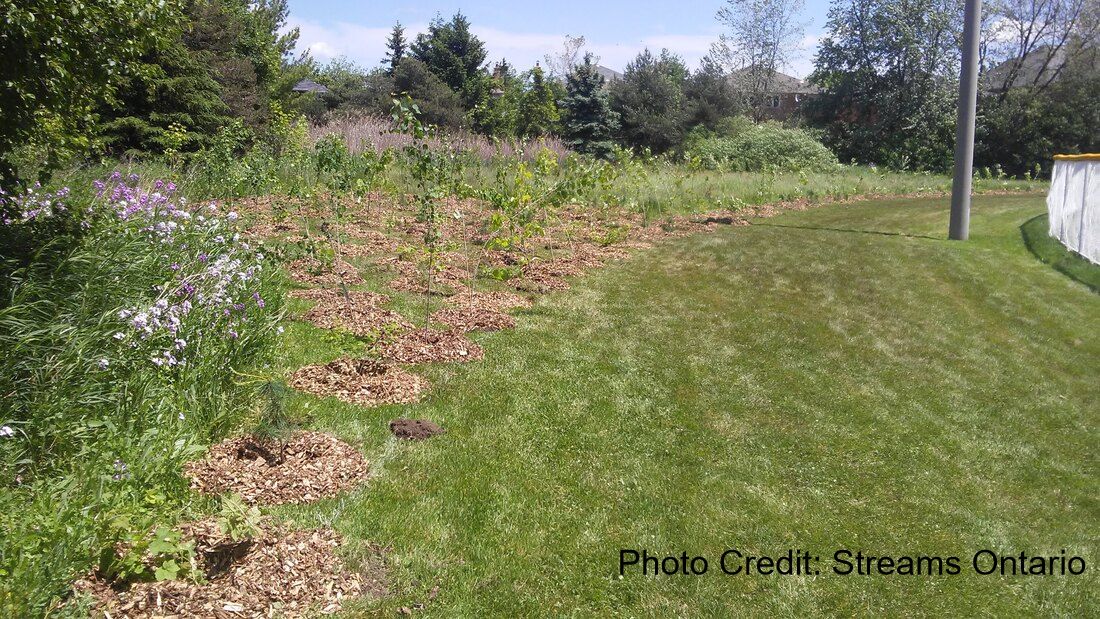|
By Alex Nagy, Ontario Streams Volunteer A riparian zone is the land bordering a stream, river, lake or other type of surface water. These important ecosystems are typically dominated by diverse water-loving plants. Riparian zones act as a buffer separating human activity from sensitive aquatic ecosystems. The protection of the riparian zones in urban areas is of utmost importance in part because the land separating the streams from recreational and urban development areas is shrinking. This increased development causes stream bank erosion, increases the potential to introduce non-native species and increases sun exposure which warms the water thereby reducing oxygen levels. Planting native trees and shrubs is a restoration tool used to combat these issues. Stream plantings reduce erosion by stabilizing the soils on stream banks, increases resiliency preventing invasive species from establishing, provides shade which keeps streams cool as well as food and habitat. Understanding riparian zones are important is a first step, but what else can you do to help? Many environmental organizations work to restore riparian zones using best management practices. One such organization, Ontario Streams, is a non-government, non-profit charity based out of Aurora. With the support of community volunteers Ontario Streams hosts riparian and wetland tree planting events to enhance stream health around the Greater Toronto Area. Red Osier Dogwood (Cornus sericea), Black elderberry (Sambucas canadensis) and Heart-leaf willow (Salix eriocephala) are common types of shrub Ontario Streams plants in riparian zones. These shrubs are excellent species for supporting stream banks due to their strong root systems, and their ability to withstand flooding events. They grow quickly in wet environments and provide shade to the stream.
Willows and dogwoods are unique because these species reproduce easily. Did you know you can grow these species by cutting young stems in the spring before leaves emerge? Just place the fresh cut stems into moist soil, leaving 1/3 of the stem exposed, and a new shrub will start to grow! Anyone can help! If you live nearby a stream, avoid mowing in the riparian zone so trees and shrubs can start to establish and grow to provide positive impacts for a healthy stream.
0 Comments
Leave a Reply. |
AuthorWrite something about yourself. No need to be fancy, just an overview. Archives
July 2024
Categories |


 RSS Feed
RSS Feed
